5 Steps to Have a New Body by Alice Williams (good books to read for adults .txt) 📖

- Author: Alice Williams
Book online «5 Steps to Have a New Body by Alice Williams (good books to read for adults .txt) 📖». Author Alice Williams
STEPS TO HAVE A NEW BODY PRESENTED BY ALICE WILLIAMS
P 
https://tinyurl.com/newbody-method
¡CHECK OUT THIS EXTRAORDINARY METHOD TO HAVE A HEALTHY NEW BODY BEFORE YOU CONTINUE!
The shape of your body changes naturally with age. One cannot avoid some of these changes, but your lifestyle choices can slow down or accelerate the process.
The human body is composed of fat, lean tissue (muscles and organs), bones and water. After 30 years of age, people tend to lose lean tissue. Muscles, liver, kidneys and other organs can lose some of their cells. This process of muscle mass loss is called atrophy. Bones can lose some of their minerals and become less dense (a condition called osteopenia in early stages and osteoporosis in later stages). The loss of tissue reduces the amount of water in your body.
The amount of body fat increases steadily after 30 years. Older people can have almost a third more fat, compared to what they had when they were younger. The fatty tissue accumulates towards the center of the body, even around the internal organs. However, the layer of fat under the skin becomes smaller.

The tendency to lose height occurs in all races and both sexes. The loss of height is related to changes due to aging in bones, muscles and joints. People usually lose about half an inch (almost 1 centimeter) every 10 years after age 40. The loss of height is even faster after 70 years. You can lose a total of 1 to 3 inches (2.5 to 7.5 centimeters) in height as you get older. You can help prevent loss of height by eating a healthy diet, staying physically active, as well as preventing and treating bone loss.
The fact of having less muscle in the legs and rigid joints can make the displacement more difficult. Excess body fat and changes in body shape can affect balance. These bodily changes can make falls more likely.
Changes in total body weight vary for men and women. Men usually gain weight until they are about 55 years old, and then begin to lose weight later in life. This may be related to a decrease in the male sex hormone testosterone. Women usually gain weight until they are 65 years old and then begin to lose weight. Weight loss in adulthood occurs in part because fat replaces lean muscle tissue and fat weighs less than muscle. Eating habits and physical activity can play an important role in a person's weight changes throughout their life.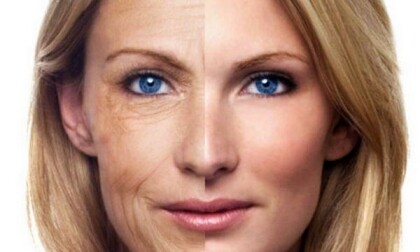
Your lifestyle choices affect how quickly the aging process takes place.
To the extent that aging is a dynamic process, it involves the idea of change, which usually translates into losses and is experienced by those who experience it. These losses occur at all levels, not only in the purely physical sphere, and are common to all people, although the way in which it occurs varies from one to another and from one organ to another.
In fact, aging is a process that begins at the moment we are born, although it is accepted that it is from the age of 30 when our life begins to trace the downward line that ends in death. This process consists of a progressive and usually slow loss of vitality, understanding this as the capacity that the organism has to perform its different biological functions.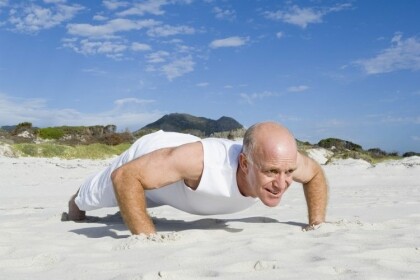
This process of loss affects all spheres of the person and their life and is common to all individuals of the human species, although, as we have just said, the cadence with which it develops varies from one individual to another.
There are several factors that contribute to the aging process. The first is our genetic load, a kind of capital that we are born with and that we are spending throughout life. A second and very important factor is the environment, the way of life of each individual since birth, which includes the degree of physical activity carried out throughout life, the type of food, the greater or lesser environmental pollution to which has been exposed, toxic habits (consumption of tobacco, alcohol and other harmful substances) and what are called risk factors. All this would be something like the way in which each person spends the genetic capital with which he has come to the world, which will influence in a more or less positive or negative way in his aging process. A third factor is the sequel that may have left the different diseases or mutilations, accidental or provoked (surgical interventions), to which each individual has been subjected.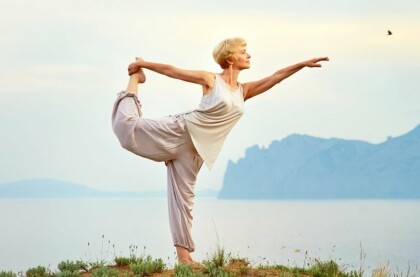
Depending on the degree of participation of each of these groups of factors, we speak of "physiological aging" -we could say normal- when it is due exclusively or at least mainly to the passage of time, to have known or could spend wisely the capital received genetic, or "pathological aging", when environmental or lifestyle factors have played a key role in its appearance.
In any case, it must be taken into account that old age is not a disease. This is a fundamental principle that should help us fight against attitudes of fatalism or resignation, as well as against topics such as "that are things of the age" or "at your age what you want", although, of course, It has to be accepted that old age is accompanied by a greater number of illnesses and a lesser capacity to adapt to changes, including those that have to do with the social sphere and with the environment.
As has already been pointed out before, with age there are a series of changes in our body, which are both anatomical (affect the morphology, that is, the shape of our body) and physiological (affect the functions of our organs and systems).
It may have happened to you that at a certain age you began to have difficulty seeing close objects, which is known as presbyopia. This may be a first indication of aging, one of those physiological changes we have just discussed. Also the auditory capacity changes with the age, so that it is frequent a loss of capacity to hear the most acute tones (hipoacusia).
Regarding anatomical changes, we can say that in most people the proportion of body fat increases with age by more than 30% and changes its distribution in the body, so there is less of it under the skin and, nevertheless, it accumulates in greater quantity in the abdominal region. Therefore, the skin becomes thinner and more fragile and appears more wrinkled. Logically, the body also changes shape.
With age, almost all internal functions diminish. However, despite this loss, most of these functions are still sufficient for the rest of life, because the capacity of our organs is superior to what our body needs. For example, even if half of the liver were destroyed or removed, the remaining half would be sufficient to perform the function that this organ is assigned. In fact, it is the diseases, more than the aging that we have called physiological (normal), the main responsible for the loss of functional capacity in old age. In turn, this functional loss predisposes older people to suffer more and more serious problems regarding their health and well-being.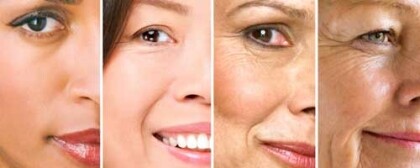
In short, the bodily changes that take place during the aging process obey both this process itself and the habits or lifestyle that have taken place over the years. Bad habits, such as sedentary lifestyle, inadequate nutrition, the consumption of toxic substances (tobacco, alcohol, drugs, etc.), will increase the loss or deterioration that normally occurs with aging and affects organs such as the heart, the kidneys, the lungs or the liver. Some of these changes can be prevented by adopting a healthy lifestyle. And what is more: the abandonment of some harmful habits, such as smoking, drinking alcohol and others, and the adoption of other healthy habits, such as the practice of physical exercise, provide benefits whatever the age of the person. 
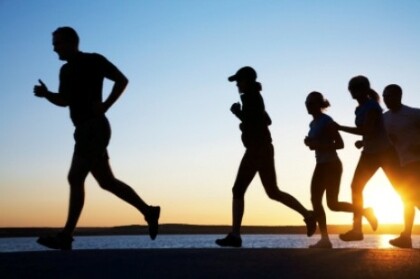
Changes in the psychological sphere
The most widespread idea from the biological perspective is that old age, whose beginning is usually set at the time of retirement, implies loss, decline and deterioration. This is a vision that assumes that, in the psychological realm, the same thing happens in the purely biological, but does it really happen like that?
The is not finished when its maximum physical and biological maturation is reached, nor does its deterioration necessarily begin when the biological decline begins. Rather it must be said that, in this balance between evolution and development and involution and deterioration, or if you want between gains and losses, there are psychological factors that present gains (improve) and others that present losses (worsen).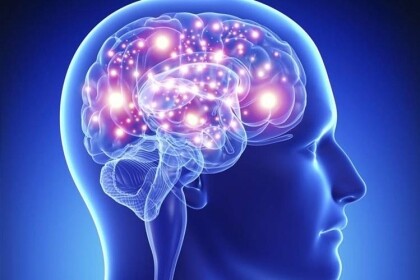
It is true that from the age of 70 on, significant declines are experienced in the psychological sphere, but it is also true that there are gains and improvements throughout life, even at 90 years of age. For example, while some cognitive functions begin to decline very soon (from the age of 20), other skills, such as vocabulary or knowledge, do not do so until very old (at the age of 70); Even other functions, such as the balance between positive and negative affect, present a greater balance in old age. In short, there is growth and decline throughout life.
During these four decades, hormones and lifestyle dictate how we see and feel. Increased sex drive, stress, weight gain: changes are many but there is a way to live with them.
With each decade life expectancies and also fears increase. We think about a career, a profession, marriage, children, grandchildren, retirement and in our body, that will suffer with us every generational change.
At 20 years the body adapts to the rhythm, we perform better in physical exercises; then, at 30, she loses muscle tone, and with pregnancies she undergoes important changes. At 40, there is a decrease in libido and at 50 the dreaded menopause arrives. All that surpasses our physical state.
Let's see, then, what those changes are and how to fight those that harm us and help our body, faithful companion, to overcome them.
Healthier, at 20
The advantage, or disadvantage according to how it is handled, of our body at 20 is that it can lose weight constantly and, nevertheless, we feel healthier. We are at the moment full of energy and enthusiasm.
Balance, at 30 years
In this decade, hormones tend to balance. This means that most of the changes that happen in the body are influenced by lifestyle, but muscle tone also begins to be lost. At this point, a lot of women begin to look in the mirror and think "my body is not what it used to be".
The truth is that at this age the weight gain is due more to the lifestyle. Work stress, for example, is one of the reasons. High levels of stress can cause a reactionary statement of hormones that encourage the body to store weight.

At 40, eat well
When we enter this decade, the libido starts to decrease due to the lower hormones or, simply, because our body runs out faster. You must begin to take care of the bones to prevent osteoporosis or arthritis.
In the fourth decade, pre-menopausal symptoms may appear causing surprise in some women who did not wait until the age of 50. The best way to reduce symptoms is to exercise and eliminate sugar and alcohol, eat foods with omega 3 fatty acids and stock up on vitamins to fight depression.
Regarding the face, the changes are varied: the structure of the face can change significantly, since it has lost fat; the nose tends to submerge downwards, the lips lose volume and the facial structure can be affected with the loss of bone mass.
Many people are concerned about aging, that their





Comments (0)